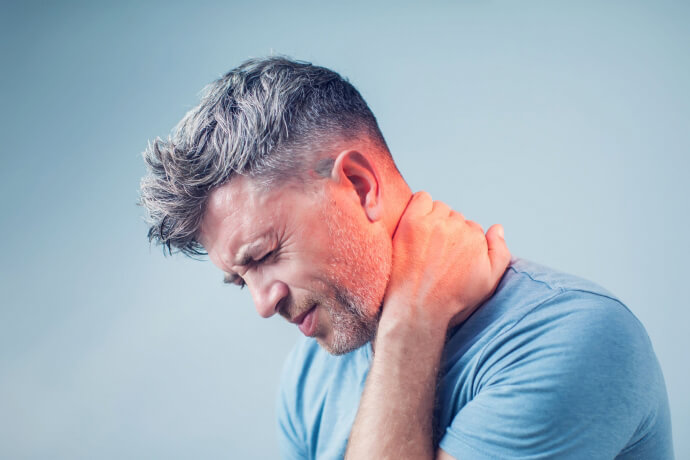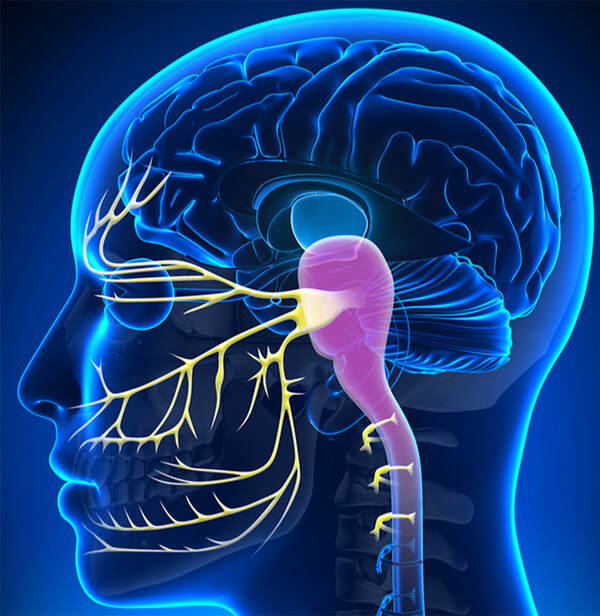Similarly to the lumbar spine and Low Back Pain, the cervical spine may produce localised neck pain, and in more severe cases radicular pain (pain radiating down the arm), with or without radiculopathy (neurological symptoms such as pins and needles, numbness or weakness).
Cervical radiculopathy occurs when the nerve roots exiting the cervical spine become significantly pinched or compressed. Spondylosis, spondylolisthesis, bulging or herniated discs, and bony spurs are all conditions which may cause nerve root impingement. Impingement to the C5-T1 nerve roots which form the brachial plexus may lead to changes in strength and sensation in the shoulder, arm and hand.
The cervical spine is also unique in that the top three vertebra (C1-3) send pain sensory information to the same area of the lower brainstem as the trigeminal (facial) nerve. It is here that messages become mixed, and upper cervical dysfunction can be experienced as a headache or migraine.

There is growing evidence that the different types of headache and migraine (up to 300 reported in the literature) are not separate entities with different pathophysiological processes but are in fact different expressions of the same pathophysiological process. This process, or disorder, leads to increased sensitisation of the lower brainstem, making the body more susceptible to more frequent and intense headaches.
There are effective treatment options for neck pain, cervical radiculopathy and headache and migraine. Our Sports Physiotherapy & Exercise Physiology team have received additional training in the field of headache and migraine and implements techniques from Dean Watson Headache Institute. All patients living with neck pain, headache and migraine will receive:
- A comprehensive assessment during their initial consultation
- Passive (e.g. massage, joint mobilisation, dry needling) and active (exercise) treatment where appropriate
- Advice/education regarding their condition
- Self management strategies to be used at home and work
- One on one, face to face treatment throughout each and every consultation
- Full access to Snap Fitness Taree’s gym equipment and group exercise classes
- Effective communication and follow ups between their Physio & GP/Specialist
Sorry, no electrotherapies used in this clinic! We actually want you to get better.

As with any region of the spine, pain sensitive structures include:
- Vertebral bodies and laminae (bone)
- Ligaments, muscles, fascia, and tendons
- Facet joint capsule and synovium
- Outer few millimetres of the annulus fibrosus (outer section of the intervertebral disc)
- Dura mater (membrane surrounding spinal cord)
- Vertebral venous plexus (small veins in the vertebra)


